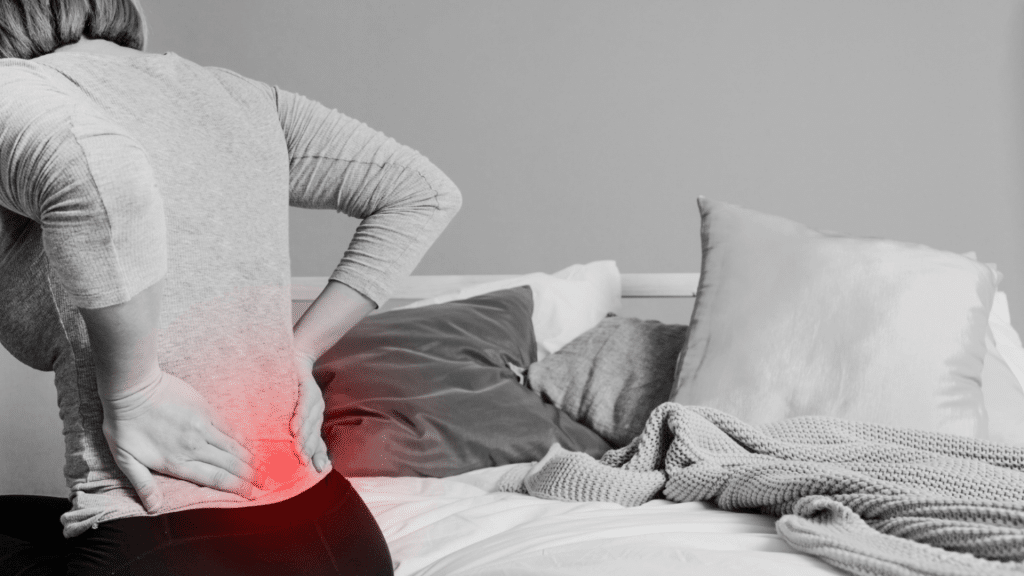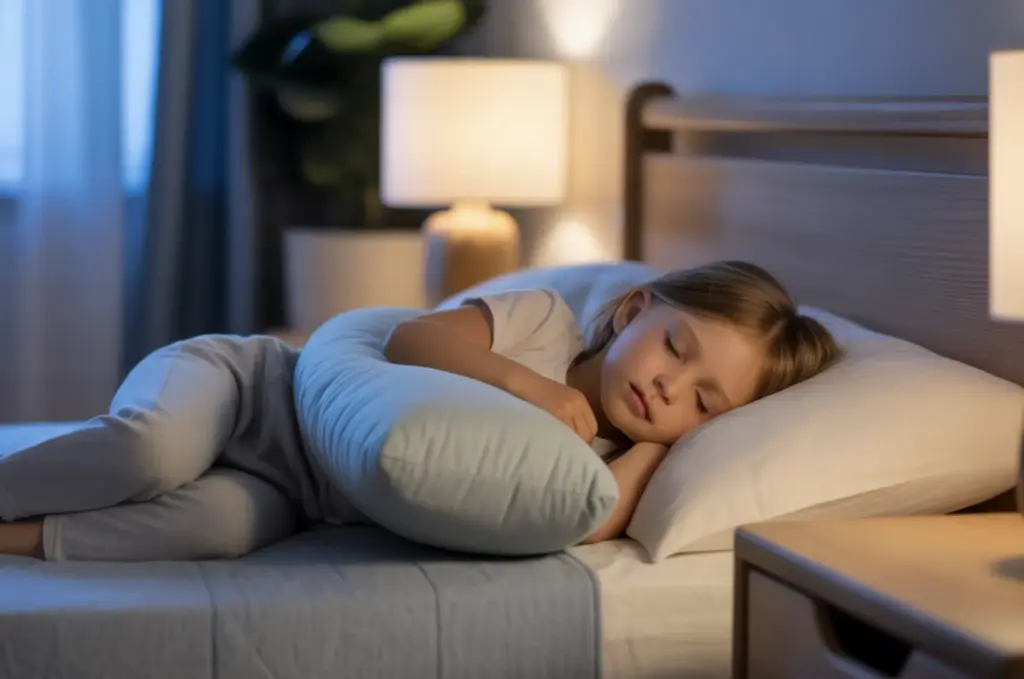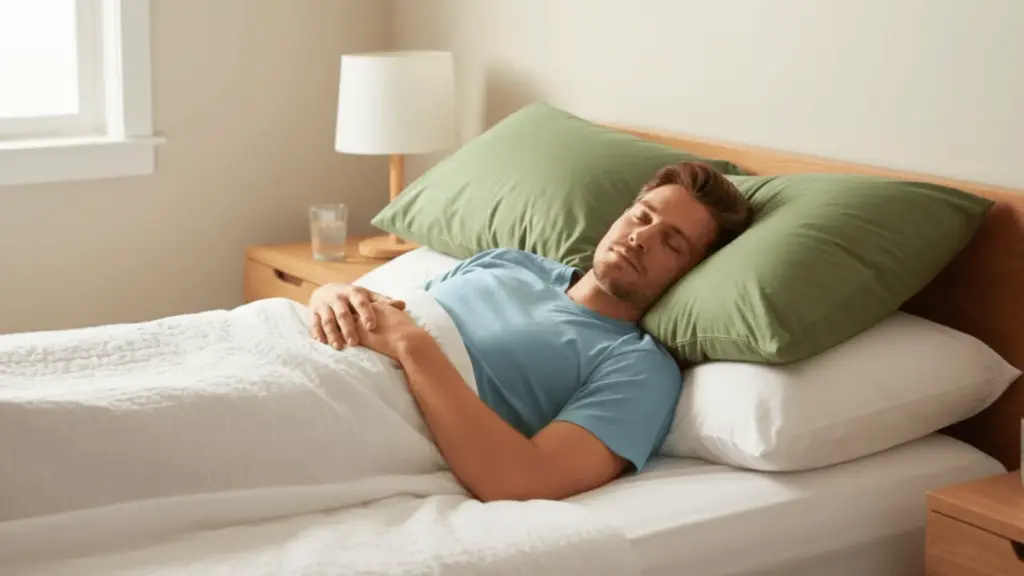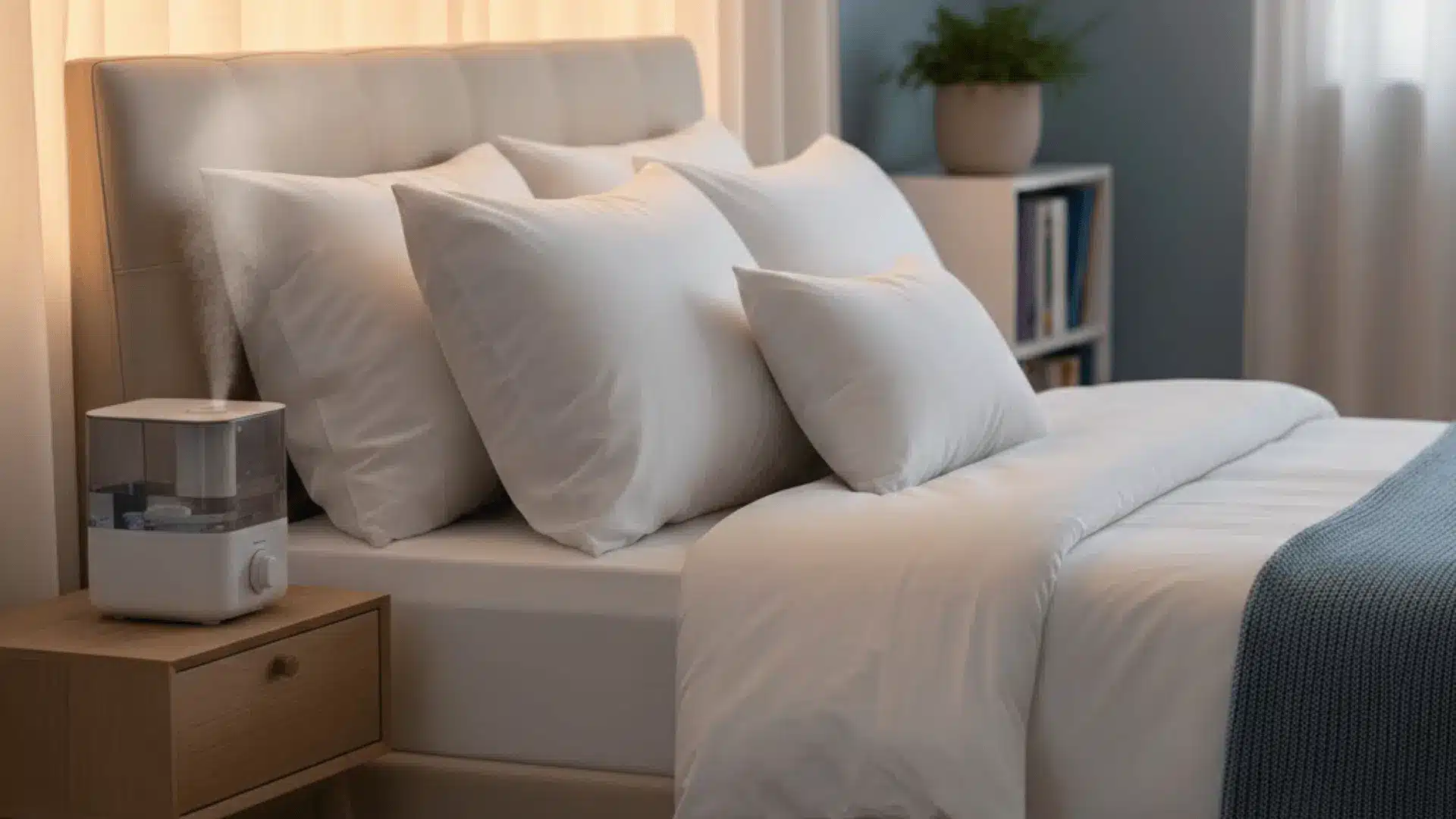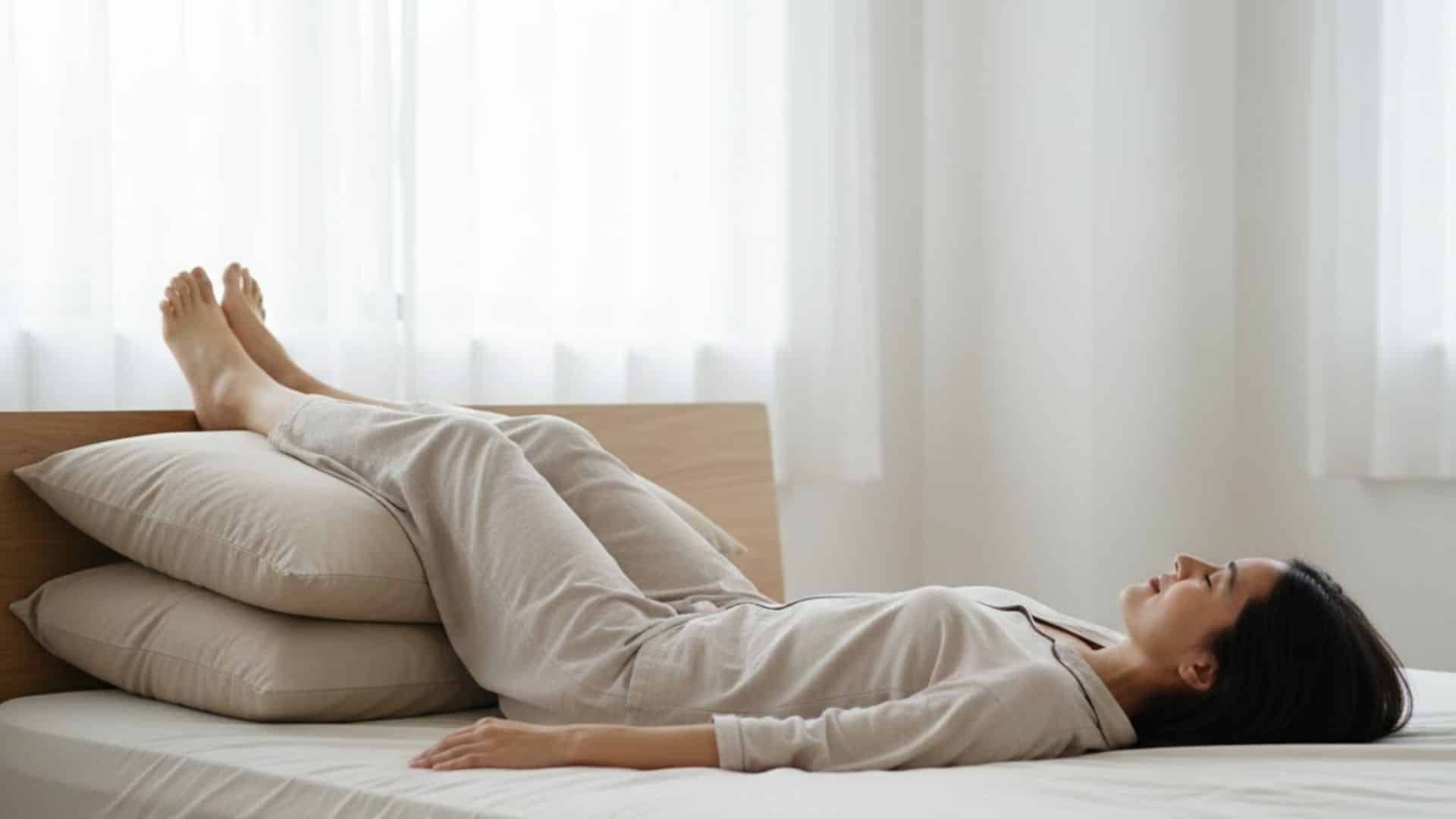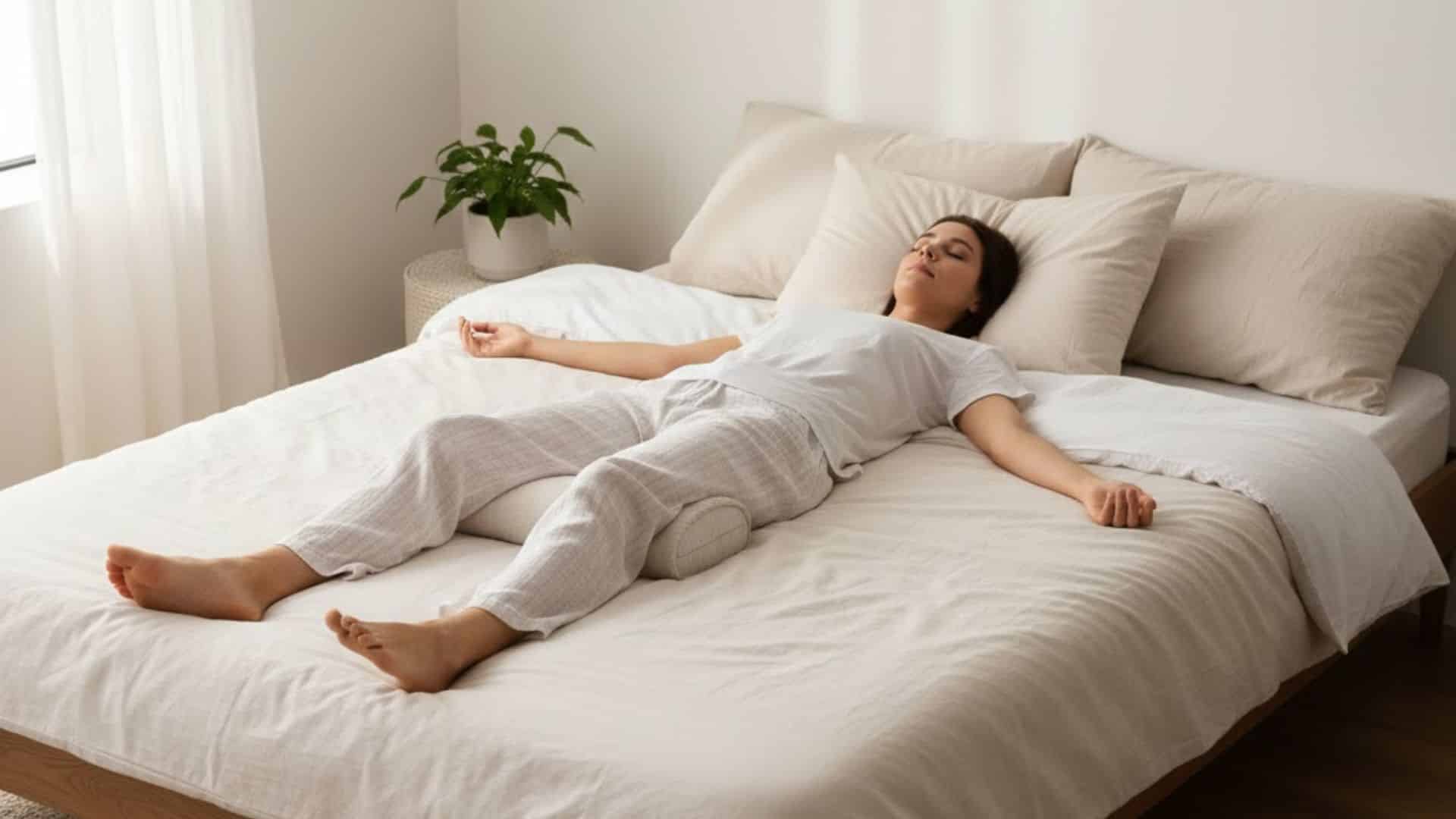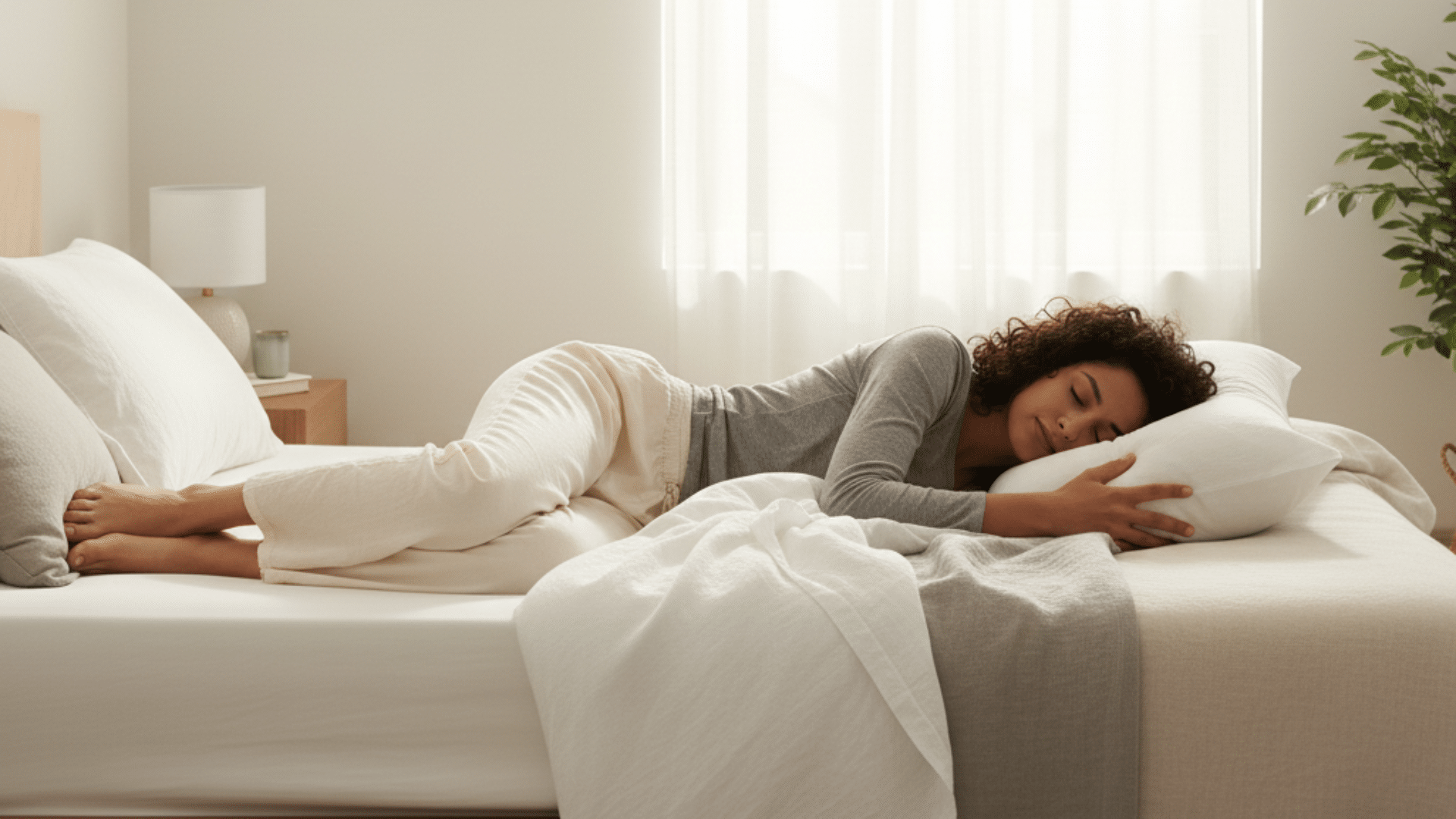Ever wake up with a sore hip that feels stiff or achy, but then it gets better as the day goes on? I’ve been there, and it can be frustrating, especially when it makes getting out of bed a little harder.
Hip pain in the morning that then goes away is more common than you might think. It’s usually tied to how you sleep, joint stiffness, or pressure on your muscles while you rest.
Today, I’ll walk you through the most common reasons your hips hurt when you wake up. You’ll also get simple tips that can help you sleep better and feel more comfortable in the morning.
Why Does My Hip Hurt in the Morning?
Morning hip pain that increases with movement is usually related to inactivity or pressure overnight. Joint irritation during sleep can also cause this pattern.
1. Osteoarthritis
Osteoarthritis is one of the leading causes of morning stiffness in the hips.
When you’re inactive for several hours, such as while sleeping, the cartilage inside the hip joint doesn’t get its usual movement and circulation. This causes the joint to become stiff and less flexible.
In the morning, your body needs time to “warm up” the hip. As you move around, the joint begins to loosen, increasing blood flow and lubrication, which relieves pain.
The discomfort usually feels like a dull ache or stiffness deep in the joint and may improve within 30 minutes to an hour of regular movement.
2. Hip Bursitis
This occurs when the bursae, small fluid-filled sacs that cushion the outer part of the hip, become irritated or inflamed.
During sleep, especially if you lie on one side, your body weight presses directly onto the affected area. That pressure can cause pain to build overnight.
You might wake up with a sharp or throbbing pain on the outer side of the hip, making it uncomfortable to lie on that side.
The pain often improves once you’re upright and moving, since the pressure on the inflamed bursa decreases.
3. Poor Sleep Posture or Mattress Issues
How you sleep and what you sleep on can have a big impact on your hip health. If your hips aren’t supported correctly, it can lead to misalignment of the pelvis and spine.
This puts uneven stress on the joints and soft tissues while you sleep.
A mattress that’s too firm can cause your hip to press hard against the surface, irritating the joint. On the other hand, a mattress that’s too soft can cause your body to sink out of alignment.
Pillows that are too thick or too flat can also throw off your posture, contributing to discomfort in your lower back and hips.
All these factors can make you wake up with soreness that improves once you start walking or stretching.
4. Nerve-Related Pain (Sciatica)
If you have lower back issues, such as a herniated disc or spinal compression, it may irritate the sciatic nerve.
This large nerve runs from your lower spine through your hips and into your legs. When it’s compressed, it can cause referred pain in your hip area.
This kind of pain often feels deep, aching, or burning. It might be worse after sleeping flat on your back or side if the nerve is compressed during the night.
Morning movement relieves some of that nerve pressure, which is why the pain may ease as you begin your day.
5. Tendinitis and Muscle Tightness
The muscles and tendons around your hip joint, especially the hip flexors, glutes, and hamstrings, can become tight or inflamed with overuse or inactivity.
Sleeping in one position for several hours can cause these already tense areas to stiffen even more.
When you wake up, the tightness can pull on your hip joint, creating soreness or a sensation of restriction.
Simple daily activities like walking or stretching often help reduce this tension and restore a more comfortable range of motion. However, if untreated, tendinitis can return each morning.
6. Hip Impingement (FAI)
Femoroacetabular impingement, or FAI, occurs when the ball and socket of your hip joint don’t fit together as smoothly as they should.
This structural mismatch causes parts of the bones to rub against each other during movement or while staying still.
People with FAI often feel a sharp or pinching pain in the groin, side of the hip, or even deep within the joint. When you’ve been lying still for hours, such as during sleep, that irritation can build up.
The pain often fades with movement, but it may return during or after certain activities like squatting or prolonged sitting.
Why the Pain Improves After Waking
Several things happen when you start moving that help reduce hip pain.
- Synovial Fluid Activation: Moving stimulates joint lubrication. Your joints produce more fluid when you move them. This fluid acts like oil in a car engine.
- Muscle Engagement: Blood flow increases, loosening tight muscles. When you move, your heart pumps more blood to your muscles. This brings oxygen and nutrients that help muscles relax.
- Postural Shift: Getting out of pressure-heavy positions brings relief. Standing up takes pressure off nerves and joints. It also allows compressed tissues to expand back to normal.
These natural changes work together to ease stiffness and restore comfort, which is why your hips often feel better as the day goes on.
When to Take Morning Hip Pain Seriously
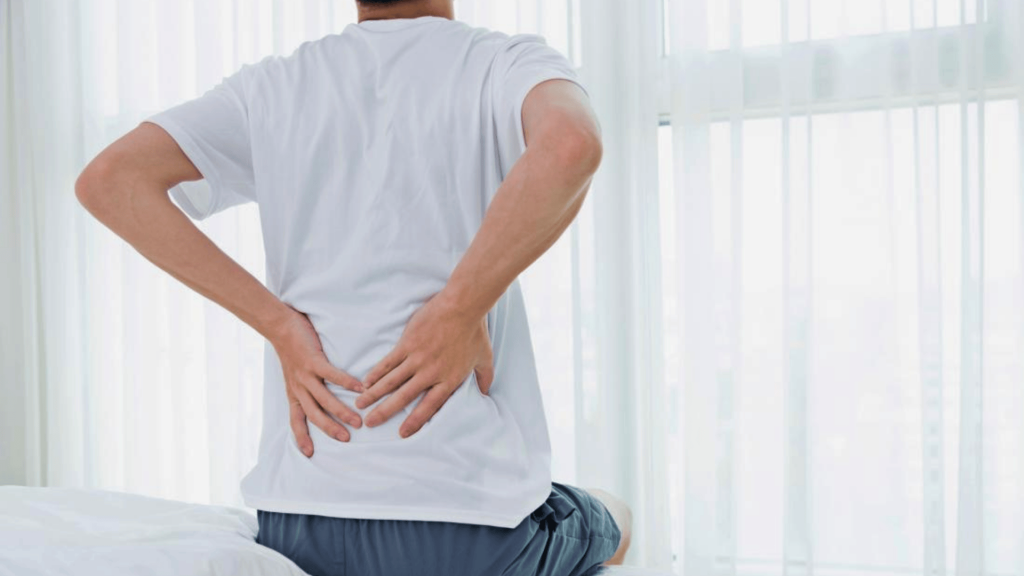
Most morning hip pain is not serious, but some signs need medical attention. See a doctor if you have constant or worsening pain. Pain that interferes with walking or sleep should also be checked.
Look for redness, swelling, or warmth in the joint area. Recent falls or trauma to your hip need medical evaluation. Limited hip mobility that doesn’t improve with movement is also concerning.
What to Do When Your Hips Hurt While Sleeping
If your hips hurt during sleep, it’s often due to pressure or poor alignment. Try these tips to sleep more comfortably and reduce pain overnight:
1. Adjust Your Sleep Setup
Use a knee pillow if you sleep on your side. This keeps your hips aligned and reduces pressure. Try a firmer mattress or mattress topper if your bed is too soft.
Sleep on your back with a pillow under your knees. This position takes pressure off your lower back and hips. It also keeps your spine in a neutral position.
2. Gentle Stretches Before and After Bed
Focus on hip flexors, hamstrings, and glutes before sleep. These muscles connect to your hip joint and can cause pain when tight. Hold each stretch for 20 to 30 seconds.
Include light mobility exercises before getting out of bed. Move your legs gently while lying down. This helps warm up your joints before you stand.
3. Morning Warm-Up Movements
Start your day with gentle movements to loosen up stiff hips. Light walking around your room, slow hip circles, and standing marches can activate your muscles and improve circulation.
Begin with a small range of motion and build up gradually.
You can also try seated knee lifts, side leg swings, or lying leg slides while still in bed. These low-impact movements help reduce tightness in the hip flexors and glutes, making it easier to move without pain. Consistency each morning can make a big difference in how your hips feel throughout the day.
4. Apply Heat or Cold
Use a heating pad in the morning to ease stiffness. Heat helps increase blood flow and relax tight muscles. Apply it for 15 to 20 minutes.
Apply cold packs at night if inflammation is suspected. Cold helps reduce swelling and numbness. Use it for 15 minutes at a time.
5. Lifestyle Support
Keep a healthy weight to reduce hip strain. Extra weight puts more pressure on your hip joints. Even small weight loss can make a big difference.
Stay active throughout the day. Regular movement keeps your joints healthy and muscles strong. Avoid sitting or standing in one position too long.
6. Long-Term Relief Options
For lasting comfort, it’s important to address the root cause of your hip pain, not just the symptoms. Here are some options to consider:
- Physical Therapy: Targeted exercises and movement correction to improve hip function and reduce pain.
- Medications: Short-term use of anti-inflammatory drugs to manage swelling and discomfort.
- Support Aids: Cushions, braces, or orthotics to improve alignment and ease pressure.
- Injections or Surgery: Steroid shots for inflammation; surgery if other treatments aren’t effective.
Choosing the right approach for your needs can help you manage pain long-term and keep your hips moving comfortably.
Common Mistakes to Avoid
Small habits can make hip pain worse or keep it coming back. Watch out for these mistakes so you don’t slow your recovery:
- Sleeping without proper hip or spine support
- Using a mattress or pillow that misaligns your body
- Skipping morning stretches or warm-ups
- Ignoring sharp or worsening pain
- Overusing pain medications instead of fixing the cause
- Sitting too long without breaks or movement
Avoiding these pitfalls can help you protect your hips, reduce discomfort, and make lasting improvements in how you feel each morning.
Wrapping Up
If you’ve been dealing with hip pain in the morning, and then it goes away, you now know it’s often linked to stiffness, pressure, or how your body rests during the night.
Small adjustments, like improving your sleep setup, adding gentle stretches, and staying active during the day, can go a long way toward making mornings more comfortable.
I hope the ideas help you better understand what’s going on with your hips and give you a few starting points for relief.
If the pain keeps coming back or starts getting worse, it’s always worth talking with your doctor. For more tips and advice, check out my other posts for helpful ways to support your health and comfort.


